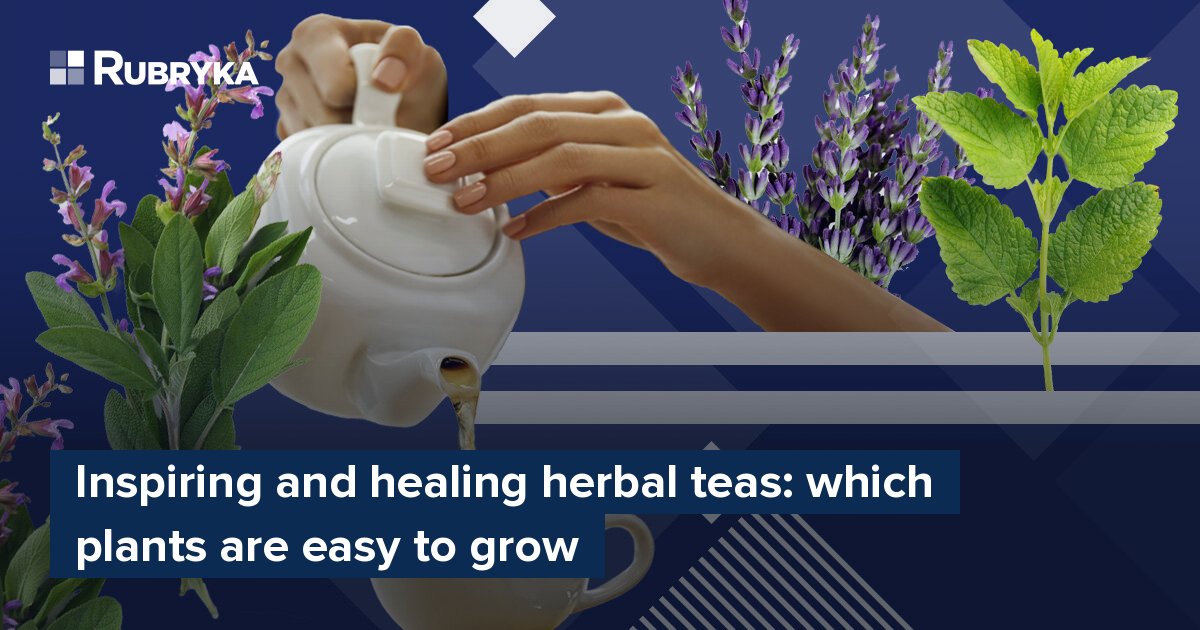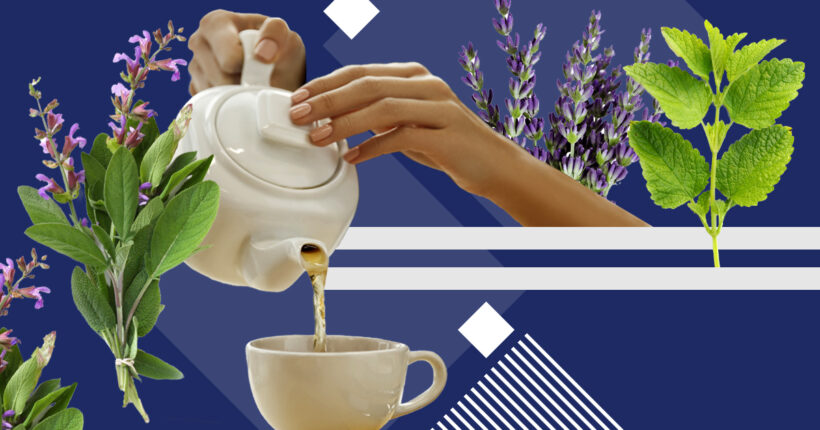
Together with the lecturer of the "Gardens" project and the curator of the collection of spicy plants of the Hryshko National Botanic Garden, Maria Gazniuk, we tell you which herbs will become your perfect tea and how to grow them even in a small space.
What is the problem?
Ukrainians are unbreakable, immunity is not
With the arrival of autumn and winter come diseases. This happens not only because of the cold but also because of a lack of vitamins, which appears due to a lack of sun and fresh berries and fruits. But some solutions can not only support health but also please with their taste, strengthen immunity every day and inspire new achievements.

What is the solution?
DIY spicy and aromatic herbs
Having even a little space or a small plot of land, it is worth creating a fragrant corner with your favorite herbs. Pleasant aromas improve mood, relax the nervous system, inspire new achievements, and ultimately improve health.
Natural aromas are most vibrant in spicy-aromatic herbs. This is a very large group of plants, but they all have one thing in common – they contain essential oil, which can include dozens of components that determine the unique aroma of each plant. The presence of essential oils determines the medicinal properties of plants; that is, all aromatic plants are medicinal.
In order to have aromatic herbs for tea in winter, you can start growing them in spring on your own plot and even at home. Important:
- collect herbs precisely during blooming;
- quickly dry them in bunches in a dry, dark place;
- separate by species and store in a dry, dark place.
You can mix herbs to your taste. But first, you should try each plant separately to track your body's reaction to it. Each plant may cause individual sensitivity.
What to grow?
Hyssopus officinalis L.
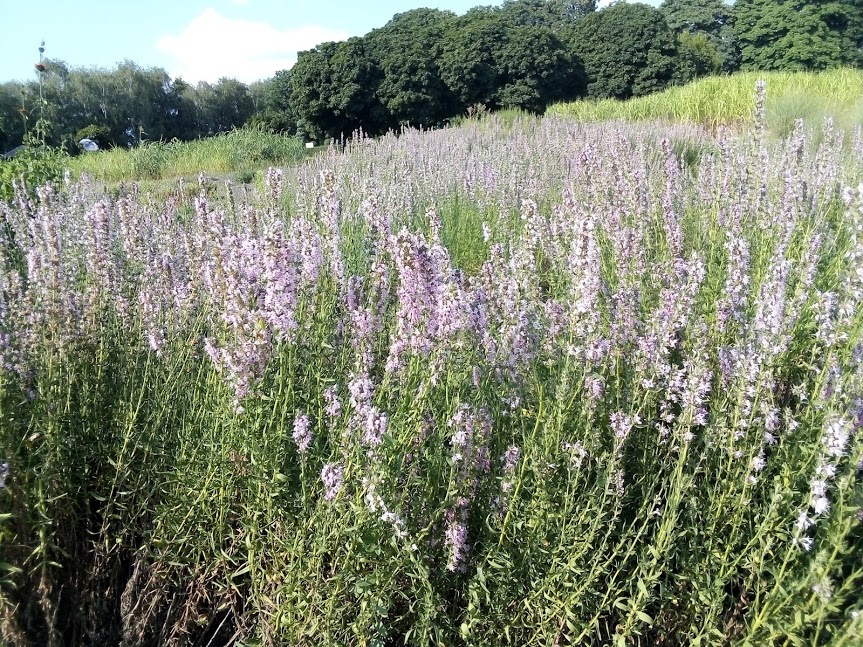
What is the benefit: the plant has long been used as a medicinal and spice. It has anti-inflammatory, bactericidal, and antiviral properties. It improves digestion and helps with excessive mucus during a cold.
Medicinal hyssop is a decorative perennial shrub up to 80 cm tall that can grow in one place for up to 20 years. It comes in blue, white and pink. Blooms in the second half of summer before frost. Young leaves are extremely rich in vitamin C and microelements — they are used in spring salads, and flowering shoots are prepared for fragrant tea. It has a calm, moderately spicy taste and aroma. And pickling and marinades with a sprig of hyssop in the usual recipe give dishes new flavors.
How to grow: sowing is carried out in early spring or winter. The depth of seed wrapping is up to 1 cm, the distance in a row is 2-5 cm, and the row spacing is 50-70 cm. Hyssop can be sown at home in a pot for seedlings, and when the sprouts are already 5-7 cm long, they can be planted in open ground or separate pots.
Hyssop is winter-hardy and tolerates drought well. With early sowing in March-April, some plants will bloom at the end of summer, but mass flowering will begin in the second year of life. The plant will need open sun and a dry environment for long life. At home, hyssop can be grown even in the cold season, but you will have to provide the plant with at least 12 hours of light per day.
Nepeta cataria
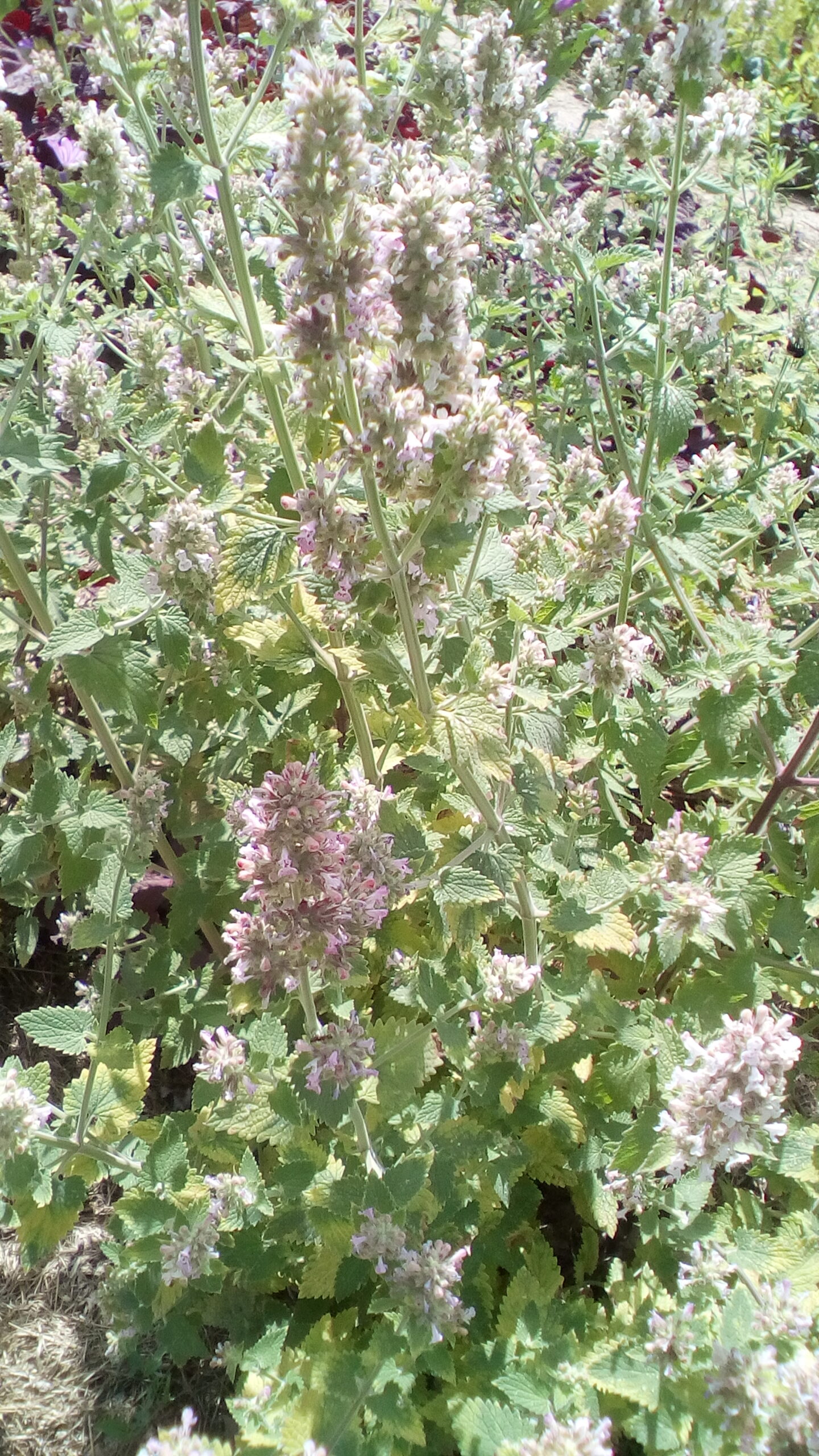
What is the benefit: the plant has antimicrobial properties, calms the nervous system, and improves digestion. In cooking, catnip is used in drinks and sweets.
The citrus aroma characteristic of catnip distinguishes it from other plants. The subtle lemon smell is well preserved in dried raw materials, which are harvested during flowering from June to August. In the garden, it can be placed in partial shade or in the sun; the plant grows better in nutritious moist soils. Lives an average of 2-4 years but reproduces well by self-sowing.
How to grow: Growing lemon catnip is very easy. This species is grown by sowing seeds in early spring, as soon as the snow falls. This culture is fast-growing, so it is suitable for growing in flower pots or containers, but its volume should be at least 1 liter. Optimal conditions for rapid growth: temperature from +15 to +25 degrees, scattered sun, and moderate soil moisture. Adult bushes in the open ground need additional moisture only during prolonged drought, while watering should be abundant.
Melissa officinalis
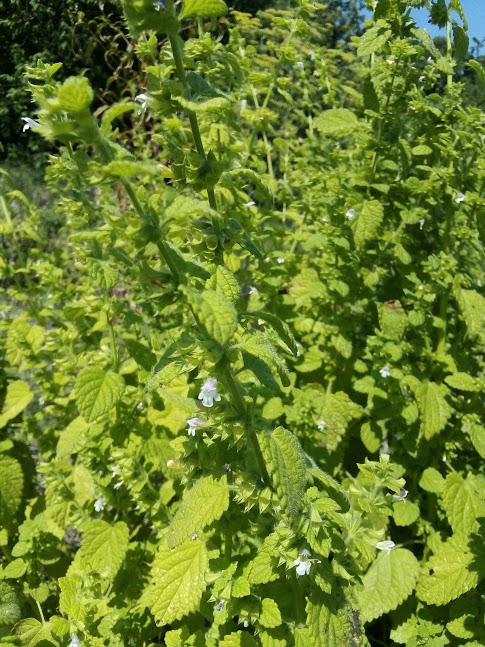
What is the benefit: lemon balm is a pharmacopeia plant — primarily with a sedative and calming effect. It also improves digestion and has an analgesic and antipyretic effect. However, it is important that, in large doses, the plant can cause depression. In cooking, fresh lemon balm is usually used in drinks and sweet desserts.
This plant has creeping roots and bright green, slightly blistered leaves. This distinguishes it from the previous species. The aroma is almost not preserved in the dried raw material, but the medicinal properties are completely preserved. The plant is perennial, reaches a height of 50-80 cm, tolerates light shade well, and likes moderately fertile and moist soils.
How to grow: easy to grow from seed or division of bushes. Seeds are sown in early spring to a depth of 1 cm; it is possible to plant them in pots. After 2 months, lemon balm should be planted. This plant does not bloom in the first year; therefore, for growing at home, it is better to plant already grown plants in pots, choosing wide vessels for them.
Agastache foeniculum, Lophanthus anisatus
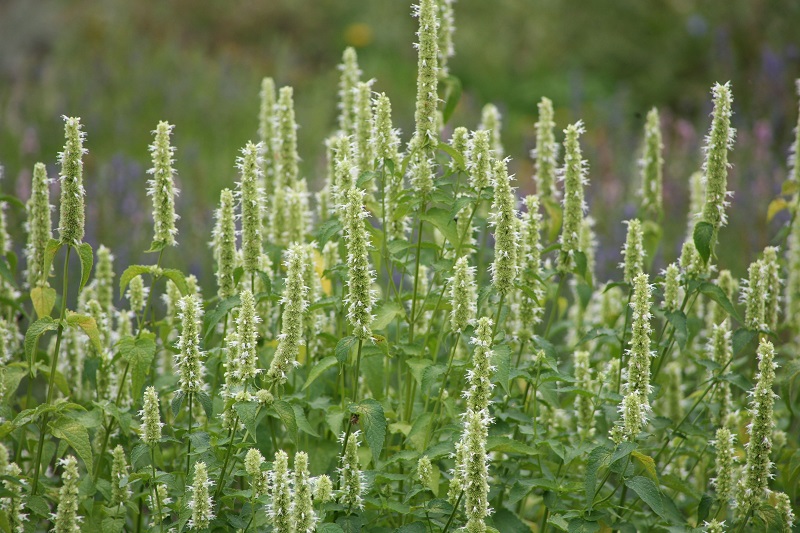
What is the benefit: this species has a light floral-anise sweet aroma, which is well preserved in dried raw materials. The plant has an antioxidant, mild immunostimulating, bactericidal and fungicidal (one that prevents the development of fungi and bacteria, — ed.) effect.
How to grow: it is a perennial and blooms with lilac or white tassels for a long time — from July until frost. Requires light and fertile soil for cultivation, moisture-loving, moderately drought-resistant. In hot areas, it needs light shading. The plant is grown only from seeds. The optimal conditions for lofant are a temperature of 20 to 25 degrees Celsius and fertile, loose, and moderately moist soil.
The plant is relatively short-lived — it lives for 2-5 years, but it recovers well by self-sowing. In the conditions of a private plot, it feels great in the partial shade of fruit trees. Both fresh and dried lofant raw materials are used in cold and hot drinks, desserts, fruit salads, and pickles. In the winter, they are harvested during flowering.
Artemisia annua
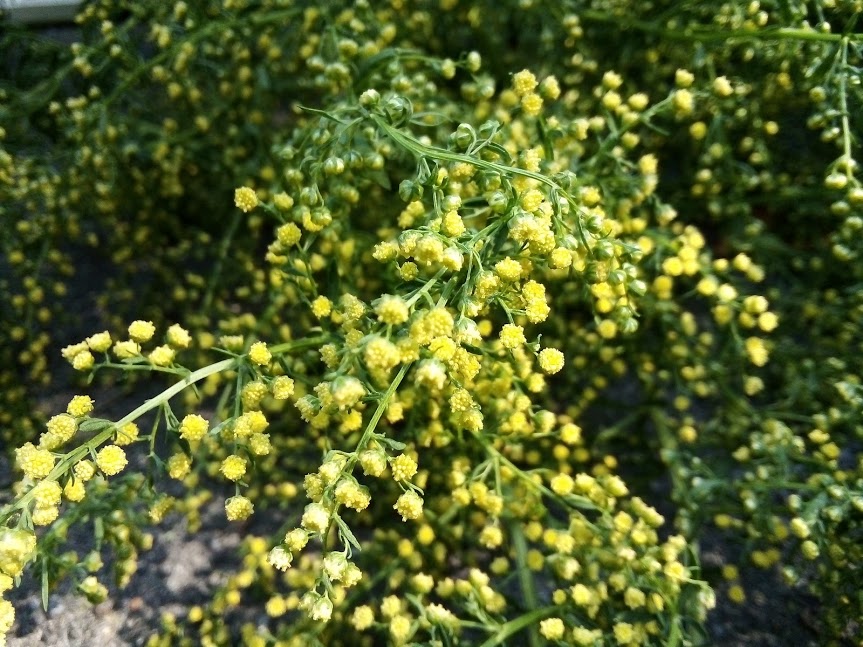
What is the benefit: unlike bitter wormwood, annual wormwood has a pleasant rich aroma and spicy taste. The plant is well studied — its antiviral effect on a wide range of viruses has been proven, it has anti-inflammatory and pain-relieving, antioxidant, and antibacterial properties, and it has an anti-tumor effect.
How to grow: the annual is undemanding to soils. The plant is capable of self-seeding, and it is quite easy to control it. Undemanding in care, the main thing is to protect it from weeds. Seeds are sown on the surface of the soil in early spring and thoroughly moistened. It is also suitable for growing in a pot, the volume of which will depend on the height of the plant. Wormwood needs a lot of sun and warmth. It is harvested during flowering.
Monarda
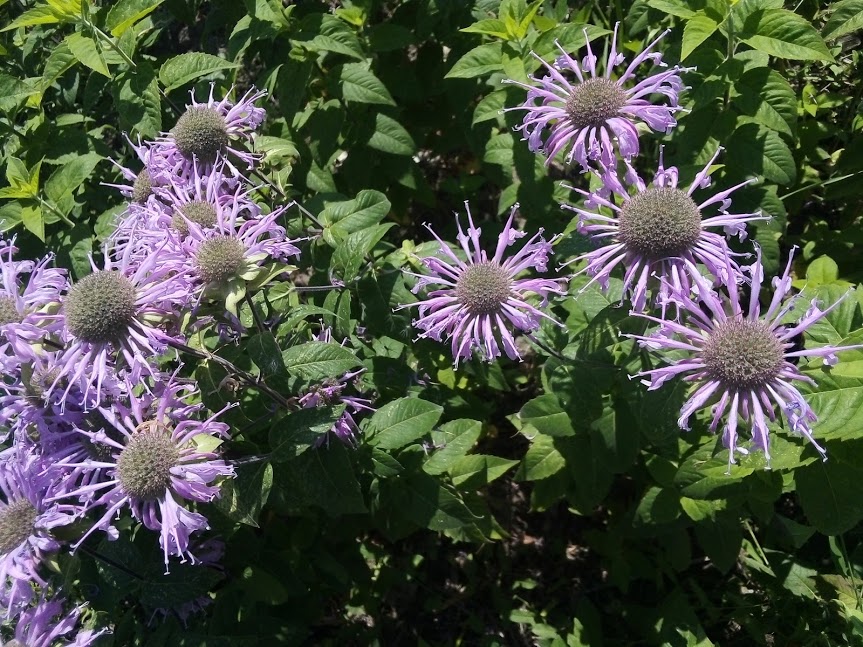
What is the benefit: the plant works as a broad-spectrum antiseptic, in other words, a natural antibiotic. Addition in small quantities contributes to the prevention and treatment in the initial stages of inflammatory processes of various origins.
The peculiarity of monarda is a bright burning taste with peppery notes. Tea, with the addition of this plant, resembles tart black tea. Also, young monarda leaves are used in salads, stews, and pickles instead of black pepper. The pronounced taste of the plant requires selecting an individual comfortable dose.
How to grow: monarda is a perennial 60-120 cm tall with a creeping rhizome. Moderately demanding on soils and moisture; blooms well only in lighted places.



